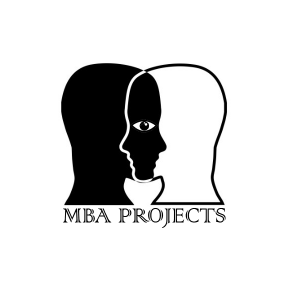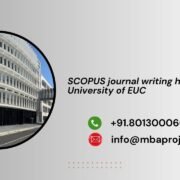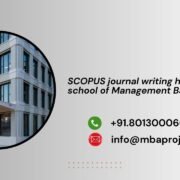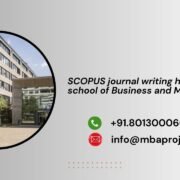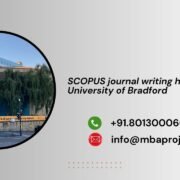SCOPUS journal writing help in University of EUC
SCOPUS journal writing help in University of EUC
SCOPUS journal writing help in University of EUC. SCOPUS journal writing help in University of EUC is becoming an essential academic service for students, researchers, and faculty members. Publishing in SCOPUS-indexed journals is not just a matter of prestige—it validates research quality, improves global recognition, and contributes to university rankings.
At the University of EUC, scholars often aim to get their work published in SCOPUS-listed journals to meet academic requirements, attract funding, and enhance their career prospects. However, writing for SCOPUS is not simple. It requires originality, strong methodology, proper formatting, and strict compliance with journal guidelines.
This article explores the importance of SCOPUS journal writing help, practical strategies for success, and how University of EUC researchers can benefit from structured academic support.
Facts About SCOPUS Publications
-
SCOPUS indexes 27,000+ journals across disciplines.
-
Articles published in SCOPUS gain higher visibility and citations.
-
Many PhD programs at EUC encourage at least one SCOPUS paper before graduation.
-
Funding agencies often look for SCOPUS-indexed publications as proof of research quality.
-
Employers value SCOPUS-listed publications as a sign of academic credibility.
Nutrients of a Strong SCOPUS Paper (Tabular Format)
| Nutrient (Element) | Description | Why It Matters |
|---|---|---|
| Novelty | Bringing new findings, approaches, or insights. | Ensures research contributes to knowledge, not repetition. |
| Comprehensive Literature | In-depth review of existing SCOPUS-indexed studies. | Shows research gap and academic awareness. |
| Methodological Rigor | Accurate, detailed explanation of design, data, and tools. | Helps validate research outcomes. |
| Results & Critical Analysis | Balanced presentation of data and interpretation. | Adds academic and practical value. |
| Ethical Research Practice | Original work with plagiarism-free writing. | Mandatory for SCOPUS acceptance. |
| Clear Language & Style | Well-structured, precise, and academic writing. | Improves readability for reviewers. |
| Proper Referencing | SCOPUS-listed references and citation tools. | Strengthens credibility and avoids rejection. |
| Journal Compliance | Following journal formatting and submission rules. | Prevents desk rejections. |
Detailed Guide to SCOPUS Journal Writing Help at University of EUC
1. Learning SCOPUS Guidelines
The University of EUC organizes research workshops and webinars that explain SCOPUS standards, helping students understand indexing requirements.
2. Selecting the Right Journal
Choosing a relevant SCOPUS journal is critical. EUC provides access to databases and expert advisors to guide researchers in selecting suitable journals.
3. Structuring Your Paper
EUC emphasizes the IMRAD structure—Introduction, Methods, Results, and Discussion—to ensure clarity and alignment with SCOPUS expectations.
4. Enhancing Academic Writing
Language and tone make a difference. EUC offers English language support, proofreading, and mentoring services to refine academic writing.
5. Data Analysis & Tools
Workshops on SPSS, NVivo, and R at EUC help students analyze data effectively, ensuring accurate and ethical research outcomes.
6. Citation & Reference Management
Researchers are trained in tools like EndNote and Mendeley to manage references efficiently and avoid citation errors.
7. Handling Reviewer Feedback
EUC provides mentoring sessions on responding to reviewer comments and revising manuscripts for higher acceptance chances.
Benefits of SCOPUS Journal Writing Help in University of EUC
-
Increases publication success rate.
-
Provides structured guidance for novice researchers.
-
Helps in meeting PhD and postgraduate requirements.
-
Improves academic reputation and employability.
-
Reduces rejection risks by following best practices.
Conclusion
Publishing in SCOPUS journals is a goal for many scholars at the University of EUC. With the right training, academic writing support, and mentoring, this challenging task becomes manageable. SCOPUS journal writing help in University of EUC empowers researchers to transform their dissertations, theses, or projects into impactful publications recognized worldwide.
For researchers aiming to succeed, utilizing university resources, collaborating with mentors, and adhering to SCOPUS standards is the ultimate pathway to publication success.
Frequently Asked Questions (FAQ)
Q1. Why should I publish in SCOPUS journals while at University of EUC?
Publishing in SCOPUS journals enhances academic visibility, strengthens CVs, and boosts career prospects.
Q2. Does University of EUC provide direct writing services?
No, but EUC provides academic support, training, and mentorship to help researchers prepare SCOPUS-ready manuscripts.
Q3. How do I find the right SCOPUS journal for my research?
University advisors and EUC library databases guide researchers in journal selection.
Q4. What are the top reasons for rejection in SCOPUS journals?
Poor novelty, plagiarism, unclear writing, and failure to follow journal guidelines are major reasons.
Q5. Can international students at EUC get SCOPUS journal writing help?
Yes, both local and international students can access EUC’s academic writing and research support services.
Thank you for reading our Blog “SCOPUS journal writing help in University of EUC”.
Also, read our more BLOG here.
For Order “SCOPUS journal ” feel free to contact us at Mob: Call / WhatsApp: +91.8013000664 || Email: info@mbaprojects.net.in




